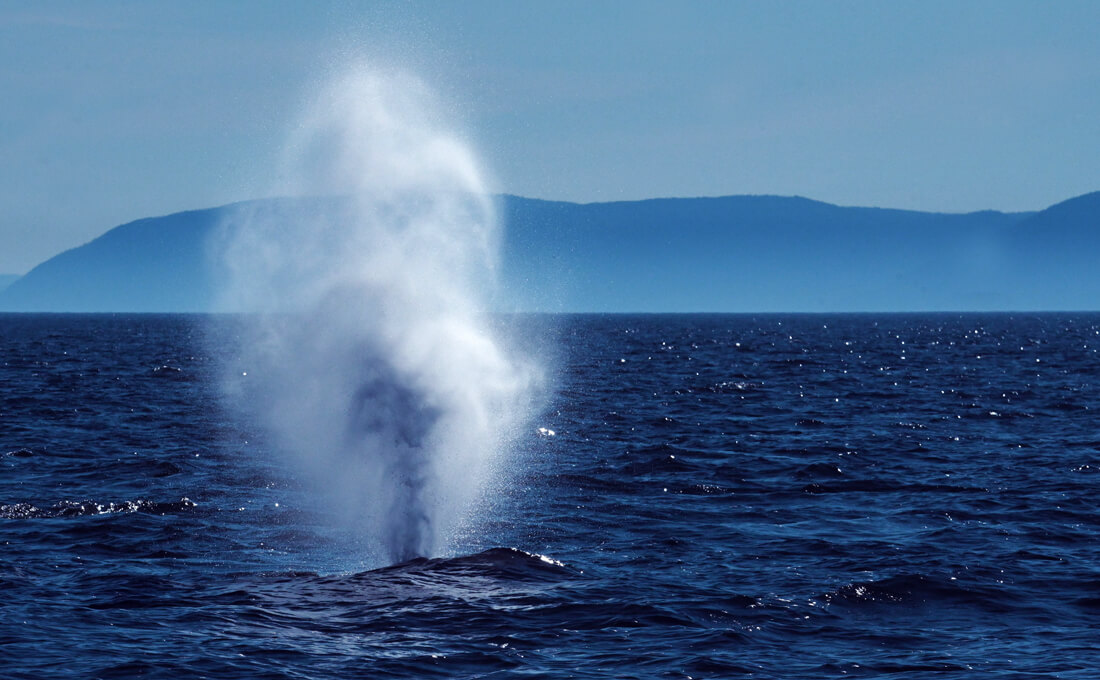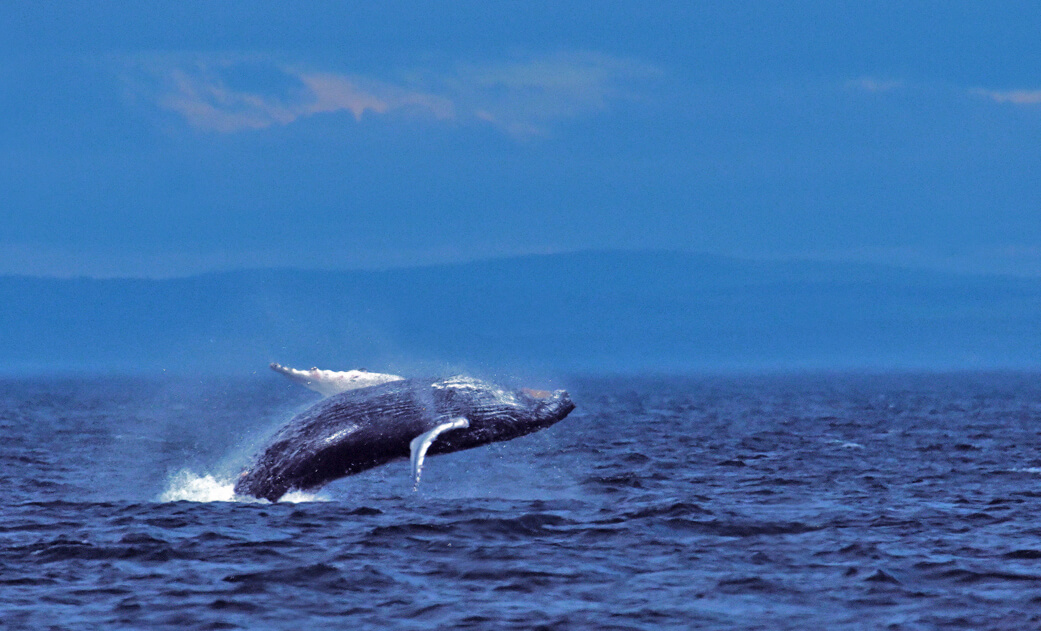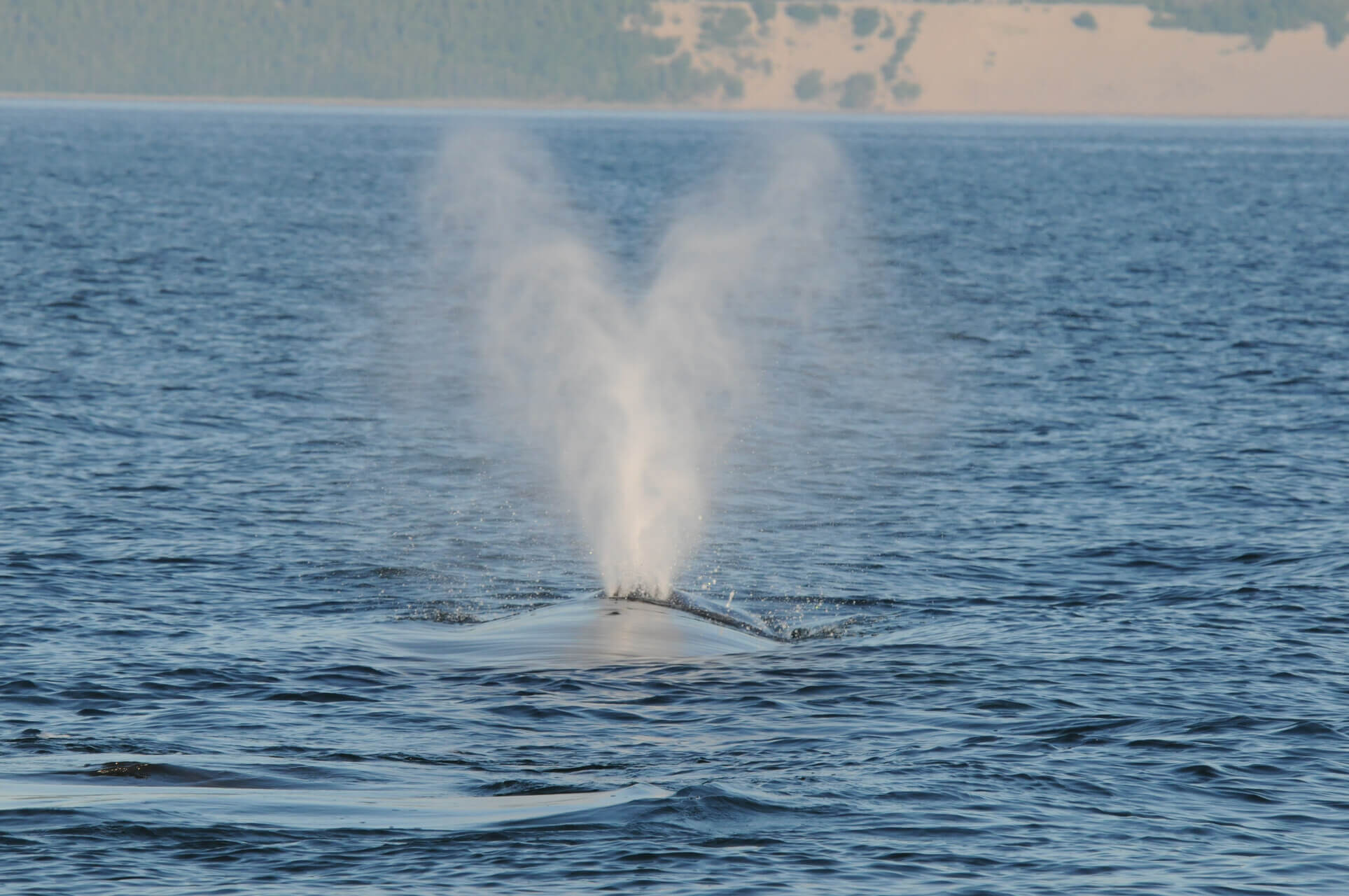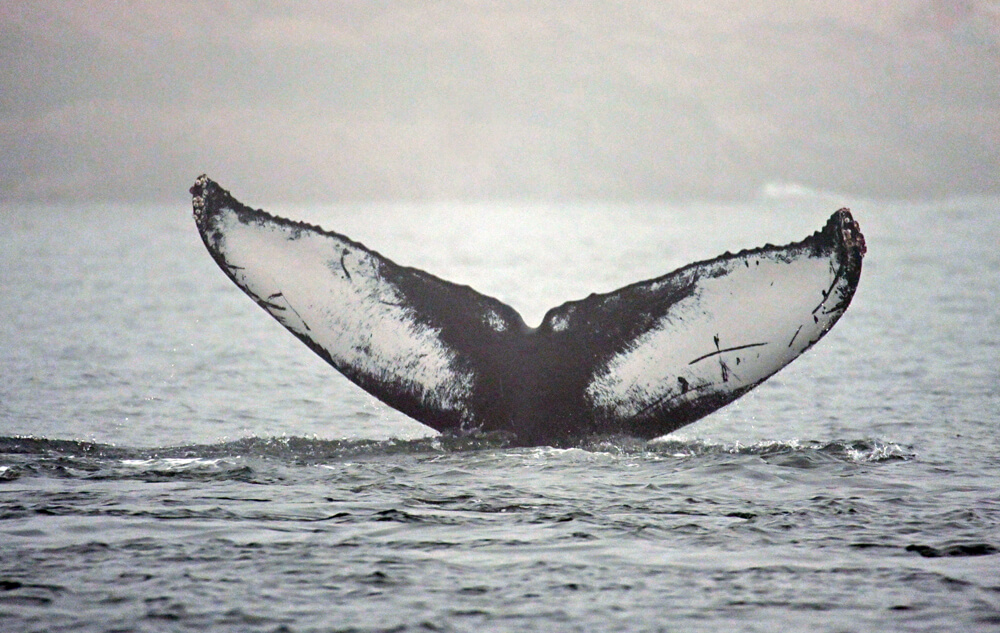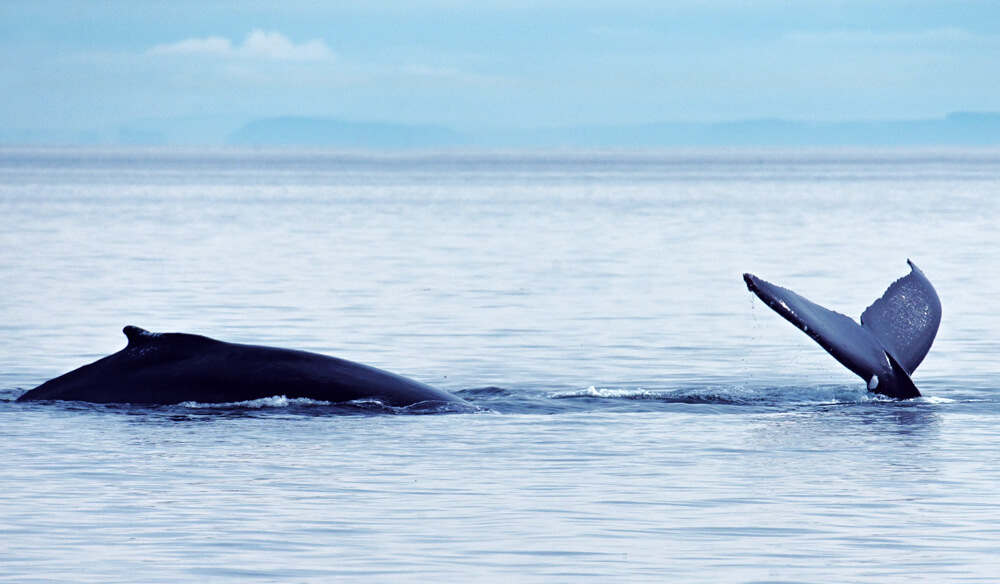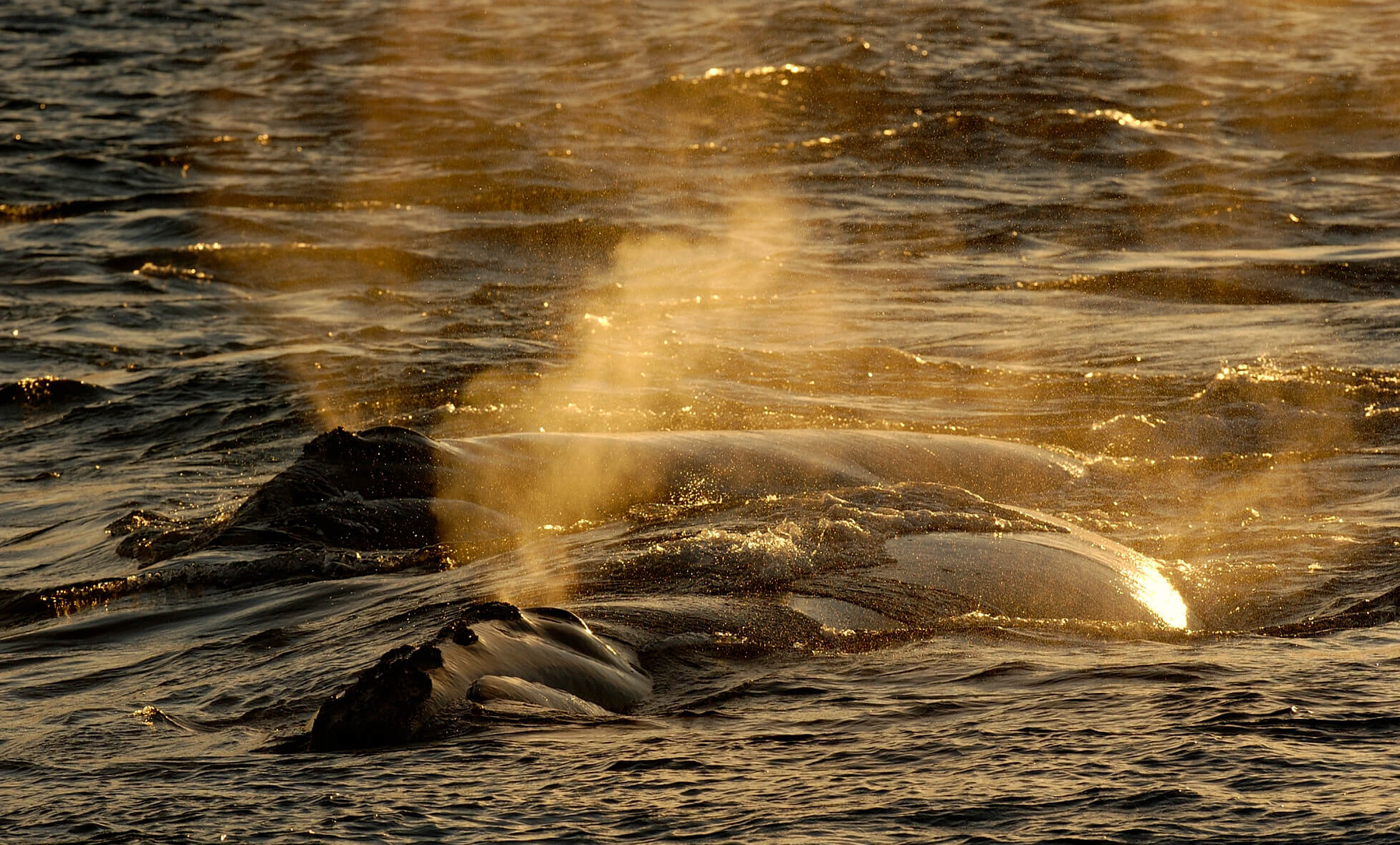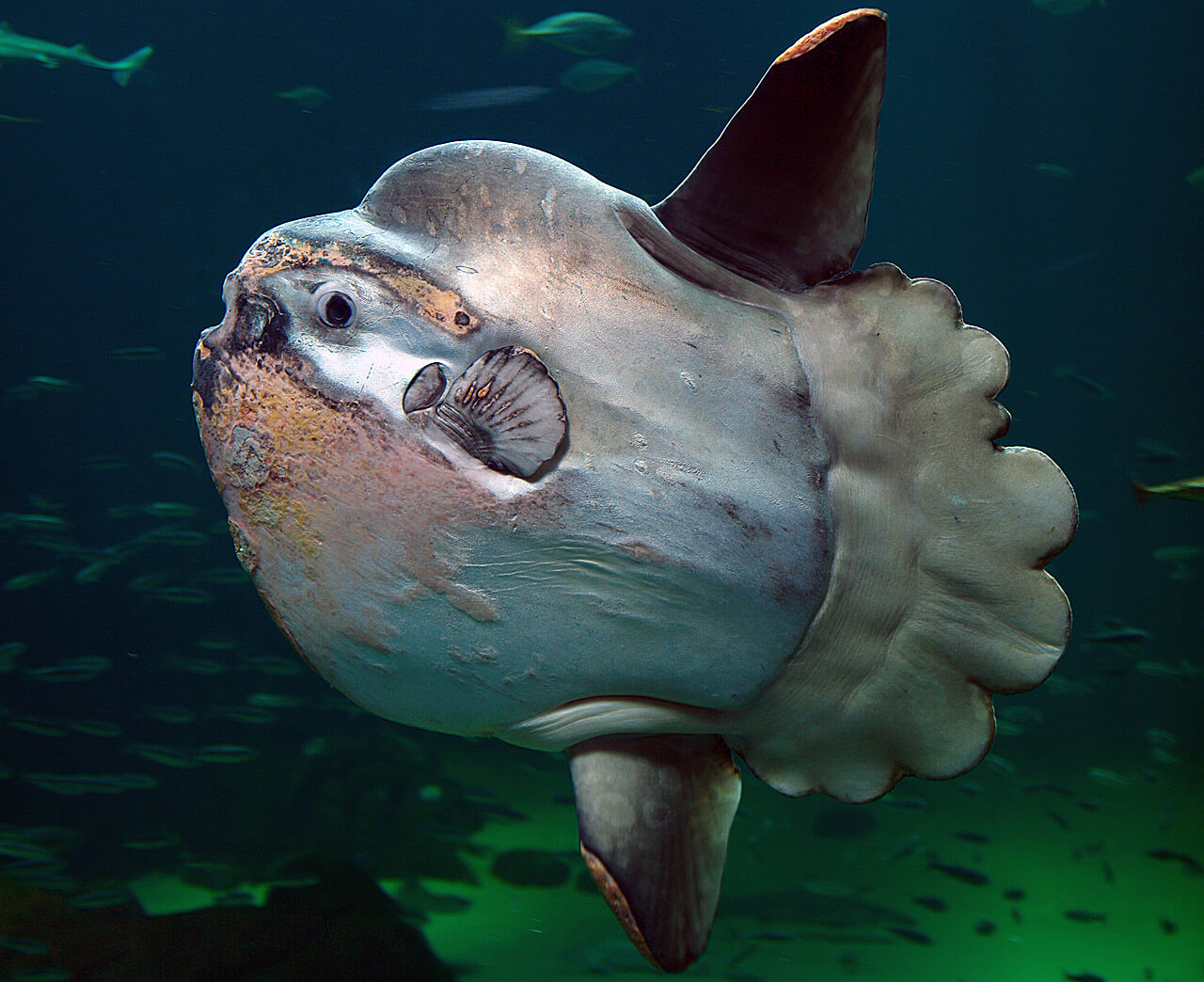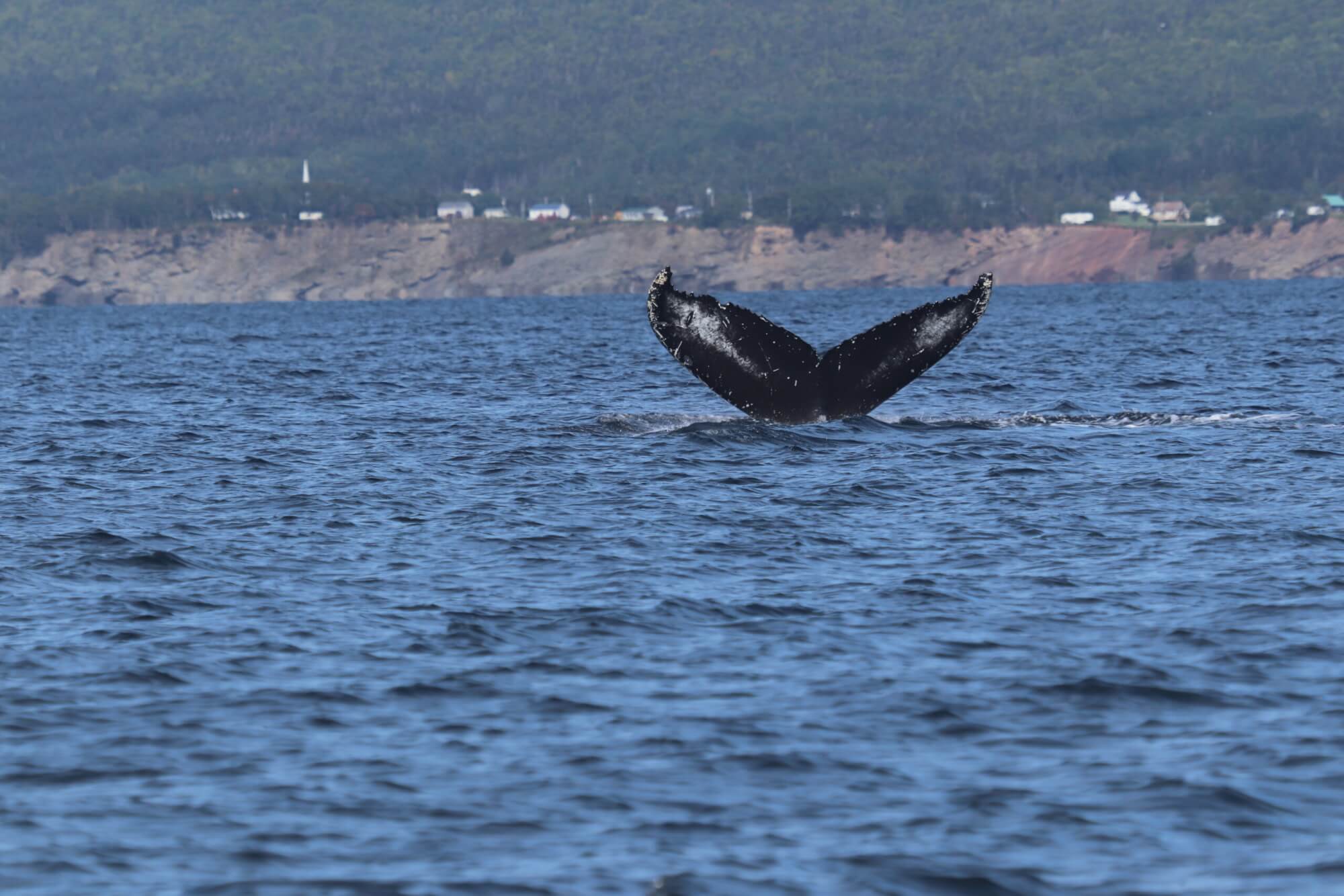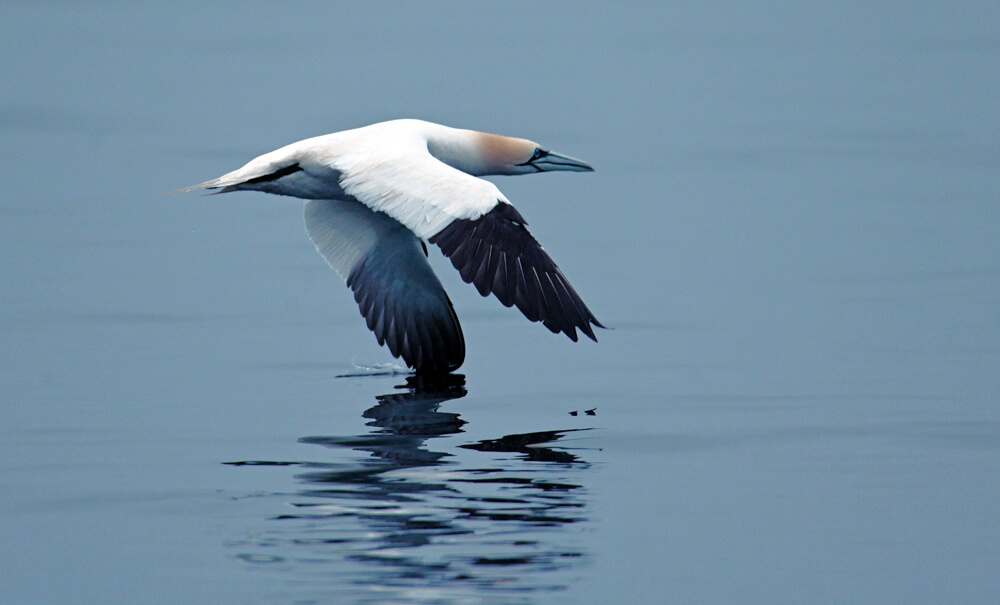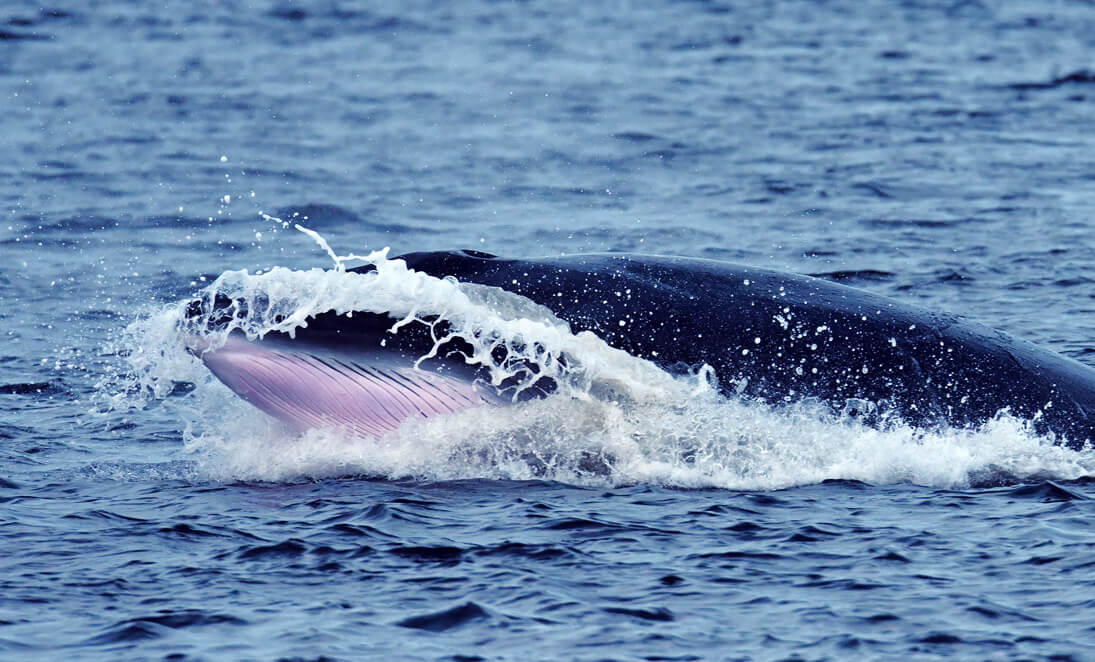Despite the excitement caused by the long-awaited arrival of sperm whales in the gulf, a certain calm has now returned to our coastal villages. The days are growing shorter and time seems to be slowing down as summer gives way to autumn. Marine mammals continue to quietly thrive – well, we hope so anyway! – in their natural environment, under the tender gaze of those who are passionate about whales and their imposing universe. This week, we welcome the presence of a phenomenal quantity of humpback whales, a few right whales, minke whales, and even a most unusual fish!
Good times for humpbacks
Have you ever wondered what whale blow contains? I like to believe that whales carry with them the dreams and secrets of the ocean. Like an echo from the depths of the sea, I think of their exhalations as one of the few easy-to-observe manifestations of the mysteries hidden below the surface, a whisper of their adventures murmured into the ears of those who care to listen. This week, the considerable presence of humpback whales was enough to delight any fan of these enigmatic sighs.
Mushroom-shaped and spraying up to 3 metres high, these spouts contain a small treasure trove of biological information: DNA, stress and gestation hormones, microbiomes. And no, contrary to popular belief, it is not water that sprays out of their blowhole, but rather a mixture of hot air, bacteria and humidity that condenses upon contact with fresh air.
Adventure-seeker in the fjord
On Saturday, a few avid cetacean enthusiasts enjoyed a little whale-watching from the lookout atop the Tadoussac dunes. In addition to being treated to sightings of a few minke whales, the observers were a bit surprised to see a humpback whale heading toward the Saguenay. Were we in for a repeat of last week’s incident? At the end of the day, CIMM employees observed a humpback timidly venturing into the mouth of the fjord. “It didn’t seem to want to decide whether or not it wanted to enter the fjord!” notes one GREMM employee. One might assume that the only thing that attracts whales to this out-of-the-way area is an abundance of food, but it is important to remember that anything is possible!
In Les Bergeronnes, the presence of three stunning humpbacks delights campers who were up at the crack of dawn, unaware that they were about to witness such an amazing spectacle. Under a rising sun, feelings of contentment fill the air. On Friday, a passionate naturalist-guide could not hide his excitement after witnessing a strong showing of humpbacks: “This morning I was so excited I nearly passed out! We had TWELVE humpbacks, ten of which were together!”
Multiple breaches were also reported in the area, in addition to at least two fin whales, countless minke whales and even a herd of at least 200 grey seals! The small white backs of belugas are always present, and even the diagnostic dorsal fin of a splashing bluefin tuna is observed.
Tic Tac Toe, an icon of the St. Lawrence, is back in the estuary once again, and new arrivals have appeared, including Yvon, Fat Bee, H871 and Leprechaun. Large groups of humpbacks were seen almost every day this week! This species is the most social of any rorqual. In summer, however, the formation of small groups is believed to be linked to sectors where food is most abundant.
On Monday, GREMM’s research team had the chance to observe no fewer than ten humpbacks as well as three fin whales between Cap Granit and the outdoor recreation area in Les Bergeronnes. The fin whales were identified as Bp33, Bp2833 and Bp984. You may have noticed that whales do not always have original nicknames. It’s simply because the inspiration is not always there…
Posted at the Marine Environment Discovery Centre in Les Escoumins, one observer remarks: “We observed a group of five humpbacks quite close to the coast! At the end, we saw five tails. It was a fantastic show. I hope one day I get the chance to see sperm whales.” The Saguenay-St. Lawrence Marine Park also reports the presence of porpoises, harbour seals, grey seals, minke whales and a large spout, the owner of which remains undetermined! Perhaps a large blue?
Right whales in Basse-Côte-Nord!
In the Mingan Archipelago, North Atlantic right whales are in the spotlight this week! The Mingan Island Cetacean Study (MICS) was able to identify four of them, namely #4190 (Curlew), #3940 (Koala), #3617 (Salem) and #1209 (El). A fifth individual was also seen, but could not be ID’d. In Sept-Îles, four blue whales and one fin whale were seen during a trip out to sea on September 10. The following day, two humpback whales and a fin whale emerged from the depths. Was it the same fin whale as the day before? Impossible to know for sure, as it could not be identified. Jacques Gélineau, maritime observer and MICS collaborator, racks up some good observations in the Port-Cartier area: five blue whales (including two pairs), four fin whales and six humpbacks (including a group of three and one duo). In the Bay of Sept-Îles, harbour seals are plentiful.
In Franquelin, it’s been rather quiet in terms of large rorquals. Minke whales, seemingly more on the move than on the prowl, are spotted by a marine mammal lover. Porpoises and seals also make appearances during another enthusiast’s observation sessions. In Pointe-des-Monts, a breaching humpback puts on quite the display!
The fish that wanted to shine like the moon
Naturalist and wildlife photographer Renaud Pintiaux was in for quite a surprise when he spotted an ocean sunfish off the Tadoussac dunes on Tuesday, September 12. In the middle of the choppy sea, what species could this strange dorsal fin belong to? The naturalist’s keen eye allows him to quickly identify the animal. Often swimming near the water surface, this large fish is sometimes mistaken for a shark. Don’t let the name fool you, though. Unlike some species of fish that are capable of redistributing absorbed light using fluorescent proteins – a phenomenon called biofluorescence – this creature does not produce light.
The ocean sunfish, also known as the common mola, looks like something straight out of a science fiction novel. This odd-looking sea creature can weigh over 2,500 kg and measure up to 3.3 metres! A pelagic species, the sunfish lives in the water column between the surface and depths of around 480 metres, and is found in all of the world’s oceans. Although its size makes it appear as if it swallowed the moon, the ocean sunfish feeds almost exclusively on jellyfish. Unfortunately, the ocean sunfish is classified as “Vulnerable” by the IUCN due to drift nets, overfishing and plastic pollution. Indeed, it often mistakes the omnipresent plastic in the oceans with jellyfish, its favourite prey.
Stealthy large rorquals on the South Shore
Despite the sparse sightings of large rorquals in the Gaspé and surrounding areas, harbour seals were present at Bic National Park as well as at Cap-des-Rosiers, this time accompanied by grey seals.
A couple of marine wildlife enthusiasts share with us their observations from Baie-des-Sables, gateway to the Gaspé Peninsula. “The whales have become very discreet but today, I once again saw a minke whale that came to feed in the Baie-des-Sables sector, just at the end of the wharf, while several gulls feasted at the surface. As soon as the minke whale arrived, the gulls took off. What a show!” Enthusiastically, they continue: “To round out the show, around fifty gannets arrived and began to plunge headfirst into the maritime smorgasbord! This was one of the most eventful weeks of the summer of 2023.”
In Cap-Chat, a diver tells about her adventures. “Yesterday we observed three humpback whales, plus a beluga and a few minke whales. The humpbacks were near the Cap-Chat lighthouse the entire day. As a scuba diver, I noticed that there were loads of sand lance. Never before had I seen so many. The humpbacks were performing breaches and belly flops ! It was quite a ruckus!”
Anticipated return
GREMM’s research team was delighted this week to encounter a group of around forty belugas in Baie Sainte-Marguerite. The most recent sighting of belugas at this location goes back to August 25, more than two weeks earlier.
A special thanks goes out to all our loyal observers who actively participate in illustrating the magic of marine life in our regions.
Where are the whales this week? Observation map
These data were reported by our network of observers. They give an idea of the presence of whales and in no way represent the actual distribution of whales in the St. Lawrence. Use it for fun!
Click on the whale or seal icons to discover the species, the number of individuals, additional information or photos of the sighting. To enlarge the map, click on the icon in the top right-hand corner. The map works well on Chrome and Firefox, but not so well on Safari.
To display the list of sightings, click on the icon in the top left-hand corner.


